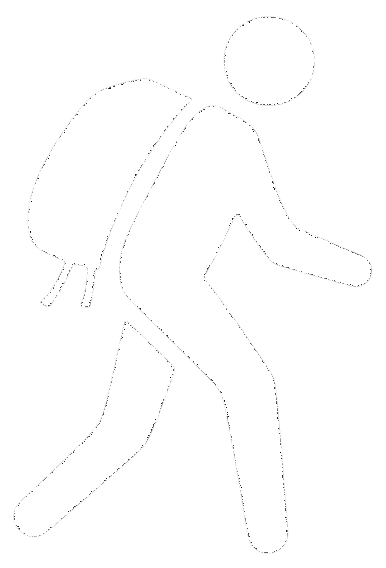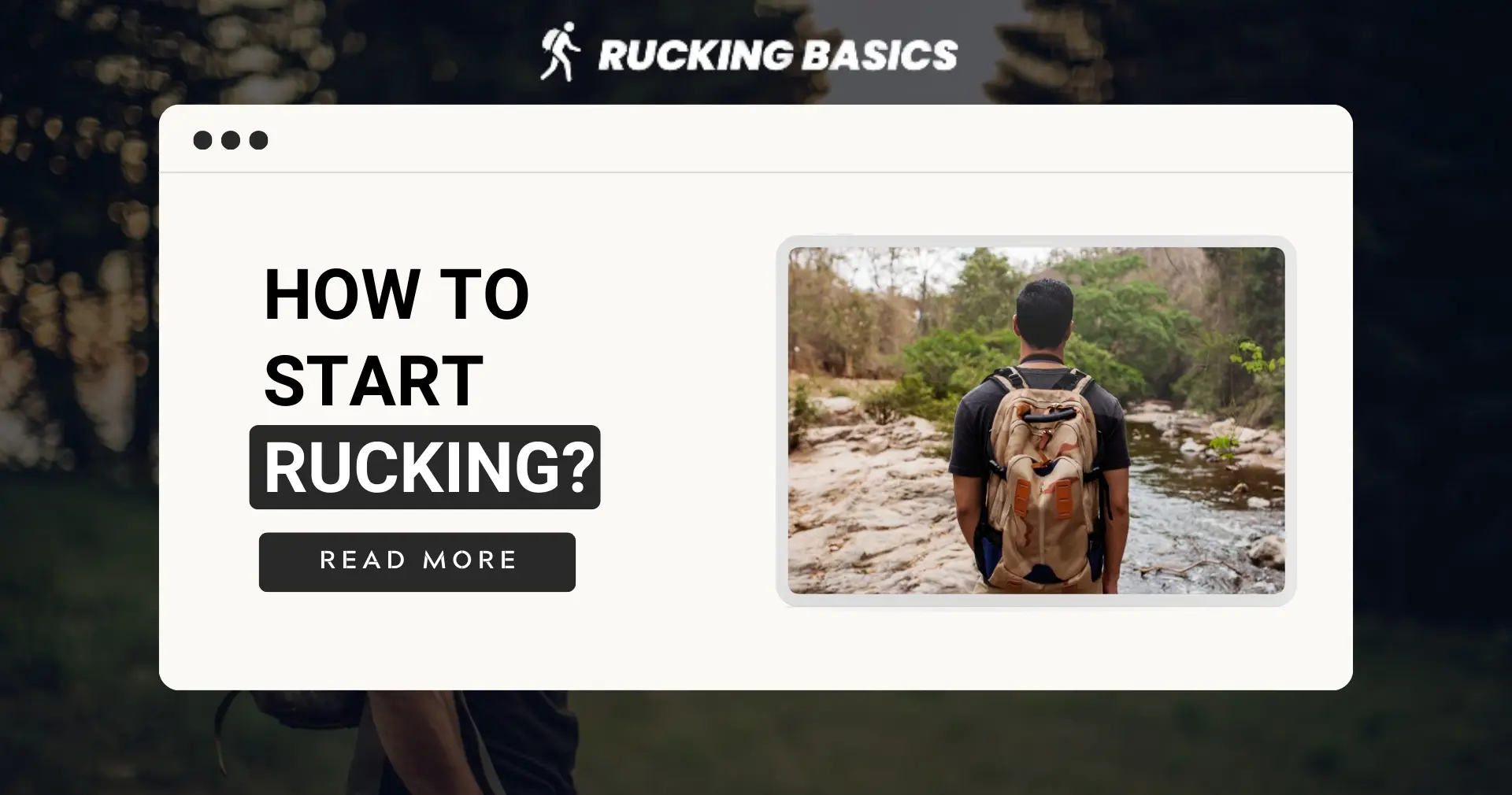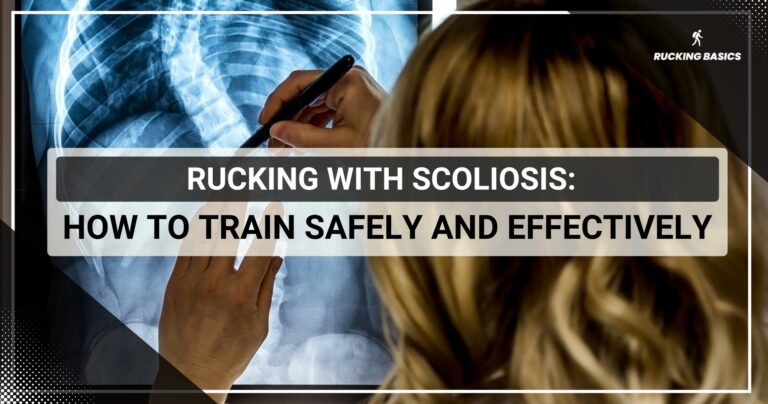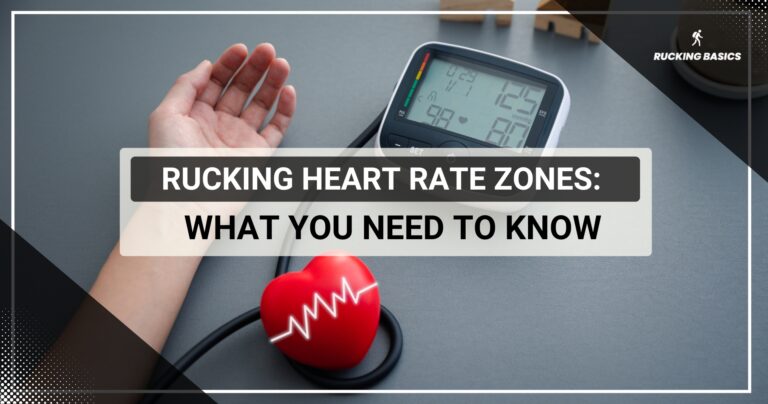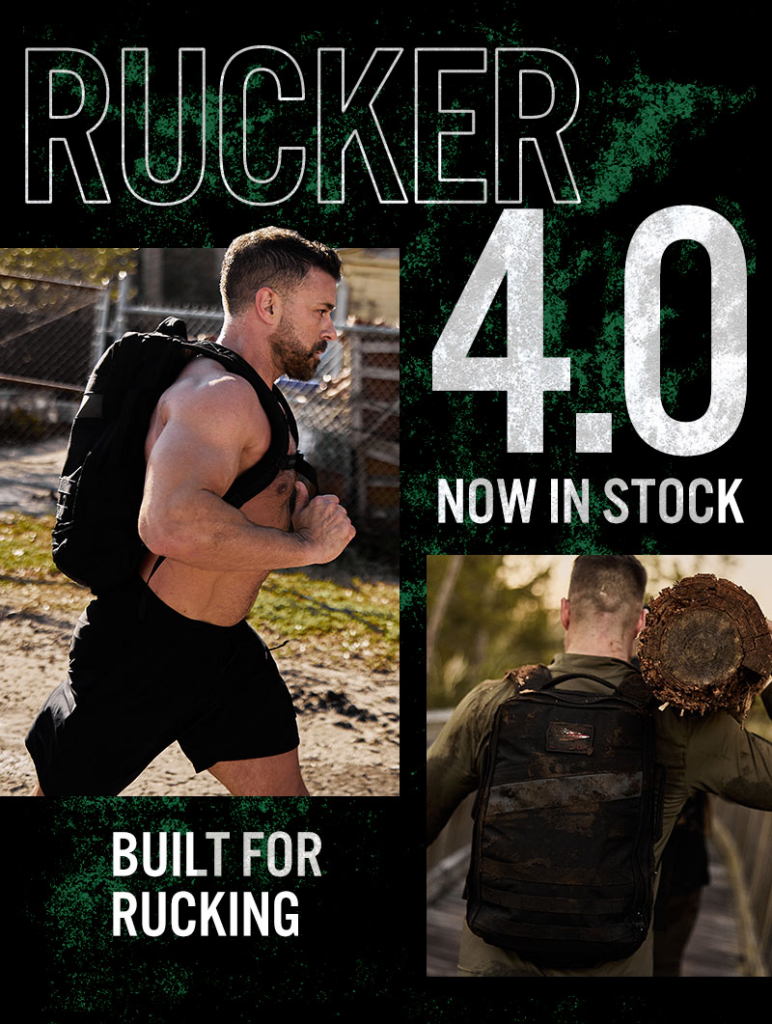You probably heard from your friends that with just a weighted rucksack and a good pair of shoes, you can transform a regular walk into a highly effective yet funny workout. Unlike running or other high-impact exercises, rucking is much safer for beginners.
I still remember my first ruck—it felt easy at first, just adding a few pounds to my bag and heading out. With the fresh air and stunning trail around me, I figured, ‘This can’t be that hard, right?’ After all those years of gym and tennis, it even felt too easy for a moment.
But as I continued, I quickly realized that I was engaging muscles I hadn’t used in a while. And I have to mention one more thing – that post-ruck satisfaction that kept me coming back for more.
I’ll help you hit the ground running (rucking) by avoiding common beginner mistakes. Here is how to start rucking below.
Setting a Safe Foundation for Rucking
I always stick to the old cliche “better to be safe than sorry.”
So, if you’re new to exercise, or especially if you have any pre-existing health conditions, a quick health check is a smart place to start. I know you feel excited to dive right in, but a simple consultation with your doctor will make you enjoy rucking even more because you will remove any concerns and subconscious restraints.
If you have a recent injury, are managing heart health, or are living with chronic conditions like arthritis or diabetes, then a check-up before beginning is not optional but practically mandatory. Taking the time to get a medical green light is the difference between a smooth start and hitting roadblocks with pain or even bigger problems.
For those who prefer a quieter, more peaceful start, rucking at night might be a great way to ease in. Not only is it often more peaceful, but night rucking can also help build mental focus as you adjust to a different environment.
Physical Preparation: Building Your Base
No, you don’t have to prepare as if you have to beat Tadej Pogacar on the mountain stages during the next Tour de France, but you will certainly enjoy rucking more and get through the start easier if you haven’t been couch potatoes for the past 6 months.
Even if you’re already active, it’s good to do foundational bodyweight strength training to prime your body for carrying weight. Although it’s impossible to mimic rucking, squats, lunges, and planks will strengthen your legs and core, which is the key to a successful ruck marching.
While you’re building strength for rucking, you might also be wondering about core activation during this workout.
If you seek to stay in the best heart rate range for endurance and fat burn, understanding rucking heart rate zones is super helpful. You can burn more calories while building stamina by staying in the right zone and you also won’t exhaust yourself too quickly.
To understand how to build abs for rucking and make the most of your core engagement, this guide on rucking and abs has fantastic tips. It explains why rucking works your core more than you’d think and how to maximize those benefits.
If you’re curious about how rucking can offer a complete workout, the rucking workout could be your secret to total-body strength. It hits multiple muscle groups and builds stamina. Plus, it’s surprisingly fun.
If you’re more sedentary or just getting back into fitness, I suggest starting with daily walks of 15–30 minutes plus a few exercises. Rucking requires both strength and stamina.
With a bit of cardio training each week, you’ll be able to enjoy longer rucks without feeling completely spent. I’d recommend doing 2-3 cardio sessions weekly, focusing on activities like brisk walking, cycling, or light jogging. These sessions help build the endurance you need to keep a steady pace and prevent that “out of breath” feeling. The better your baseline cardio and strength, the more you can appreciate surroundings and challenge yourself with a slightly faster rucking pace, although that should not be your focus at the beginning.
Choosing the Right Gear
Over time, as you ruck more often, you will also buy different types of advanced equipment. To begin with, a rucksack and footwear are really necessary, as well as breathable clothing.
Rucksack
Your rucksack is the core of your rucking setup, so finding one that fits well is crucial for comfort and safety. A good rucksack should sit snugly on your shoulders and have padded straps for comfort and support.
Look for a waist belt and sternum strap, too, which will help distribute the ruck weight more evenly and take some pressure off your back and shoulders.
If you are unfamiliar with outdoor activities and are afraid that you will not choose a good rucksack, don’t worry—we have you covered. We analyzed the best rucksacks for rucking and the best rucking backpacks for ladies.
In case you’re looking for a spacious and travel-ready option that also doubles as a great rucking companion, this GORUCK GR2 review is worth reading. The GR2 stands out for its large capacity and versatile design, making it ideal for longer rucks or when you need to carry more gear.
If you want to use it for training purposes on regular days, we have a guide on rucksacks for training, or you can consider GoRuck Training Weighted Vest 2.0 with ruck plate.
Footwear
Footwear is incredibly important for rucking, equally or even a tad more than a rucksack.
Without the right shoes and insoles, you won’t have the support and stability to handle the extra weight you carry on uneven terrain. Unlike typical running shoes, rucking shoes should offer more ankle and arch support to help manage different terrains and avoid injuries.
For a deeper dive into top-performing footwear, check out this GORUCK shoes review. It highlights durability, grip, and other features that make a difference on tough trails or casual urban rucks.
But, if you’re already considering an option like the GoRuck Mackall, you can check this GORUCK Mackall review to see if it suits your training needs. It’s designed to handle tough sessions while keeping you comfortable.
Look for the best rucking shoes with a solid grip on the soles. If you want boots rather than shoes, we tested plenty and you can see our winners in different categories here. Do you have flat feet? Me too, so I singled out the best rucking boots for flat feet as well.
Clothing
Dressing for the weather means more comfort and fewer distractions. In warmer conditions, opt for breathable, moisture-wicking fabrics that pull sweat away from your skin and keep you cool. For colder weather, layering is the way to go: a moisture-wicking base layer, an insulating mid-layer, and a windproof or waterproof outer layer are essential to keep warm without overheating.
And don’t forget about sun protection for those long, sunny rucks—a good hat, UV-protective sunglasses, and reliable sunscreen are key for any outdoor ruck. And please don’t forget about suitable socks for rucking.
If you plan to ruck in freezing conditions, there’s no need to be a hero—proper preparation is key. Learning tips for rucking in cold weather can help you enjoy even the chilliest outings. Don’t let winter temperatures stop you from rucking; they can even make the workout more enjoyable with the right gear.
Additional Gear Essentials
Rucking can be short, urban strolls or longer, trail-based adventures, and a few extras can make these treks much smoother. Hydration is essential; a simple water bottle can work, but I prefer hydration bladders that sit in your rucksack, especially for longer routes.
Visibility is another factor to consider, especially during early morning or late evening rucks. Reflective gear is an easy way to stay safe and noticeable to others. This GORUCK Reflective Bands review dives into a top-rated option that’s lightweight, durable, and perfect for increasing visibility without adding bulk. A little extra reflection can go a long way in making your rucking experience safer and more enjoyable.
One of our top picks for the best watch for rucking is another addition to your equipment that will be very important for different purposes, including GPS, heart rate monitor, and many more.
Rucksack Setup
The best rucking backpacks will facilitate packing and improve weight distribution with their construction, but you still have to do your part.
The aim is to create a stable, balanced load that doesn’t shift while you walk, which can save you from unnecessary strain or awkward posture. Put the heaviest items close to your back and centered as much as possible; this will help keep the load stable and prevent it from pulling you backward. Pack items tightly to avoid movement inside the loaded backpack, and put the lightest thing on top.
Buying a rucksack with all accessories is not enough if you don’t adjust them according to your dimensions. Start with the waist strap, as this should bear much of the weight, taking pressure off your shoulders. Fasten it snugly around your hips, not your waist, so that your hips, rather than your lower back, absorb the load. Then, adjust the shoulder straps to sit comfortably without digging in or creating any strain around your neck or arms. If your ruck has a sternum strap, fasten it across your chest to help distribute weight more evenly. This setup balances the load perfectly.
Planning Routes and Setting Goals
Your first (and at least a few more) rucks won’t be long and demanding, so no extensive planning is necessary, but you still should be prepared.
You must choose a route that’s manageable for your current fitness level. With a bit of forethought, your first ruck will be an unforgettable experience, and you won’t be bedridden for the next few days due to severe muscle soreness.
So, start simple. Look for flat, even trails that won’t throw unexpected obstacles your way. You need to focus on getting used to the weight without worrying about tough climbs or uneven ground.
If you can find a grassy or dirt trail, even better—these softer surfaces are easier on your knees and ankles and help reduce the impact on your joints.
Set realistic goals that make the experience motivating and achievable. A 1–2-mile route is a reasonable distance for getting a feel for rucking without overdoing it. Keep track of your time and aim for a steady pace—your goal here isn’t speed but consistency.
Tracking your time and distance will help you measure progress over time and give you a solid benchmark to build upon. When I started, completing a couple of miles felt like a big win that kept me motivated.
Later, you will plan breaks, but now, rest whenever you need it.
As soon as you realize that rucking is an activity that you will enjoy for a long time, start making short-term and long-term. It is so exciting, and you will hardly wait for the next ruck to achieve something.
Post-Ruck Recovery
Rucking doesn’t end when you take off your weighted backpack and shoes, at least not if you want to be injury and pain-free.
After carrying the weight and logging miles, your muscles and joints will need a little extra TLC to recover well.
Stretching keeps stiffness at bay. Calf stretches, hamstring stretches, and hip openers are just some of the excellent stretches to target the muscles used in rucking. After my rucks, I like to spend a few minutes foam rolling. It feels so good and will probably help you, even though the studies are mixed.
Rehydrate and eat after your ruck. Water and electrolyte drinks replenish lost fluids, while a balanced meal provides the nutrients your body needs to recover. The meal should also be satisfying to reward yourself.
Final Thoughts
Rucking’s simplicity makes it one of the most accessible, versatile ways to get into a fitness routine: it’s low-cost, requires minimal equipment, and offers an impressive list of health benefits.
Each ruck allows you to discover new trails and connect with others who share your passion or just disconnect from everyday things. As you progress, you’ll find that rucking is a powerful stress reliever, too.
I shared with you many tips I wish I had known when I started.
If you’re eager to learn even more and make the most of your journey, check out these essential books on rucking for expert insights and motivational tips
So, grab that rucksack, load it up, and get out there—your first ruck awaits!
We from Rucking Basic are happy to welcome you to the rucking community. We can’t wait for you to experience everything it has to offer and maybe meet you at the next GoRuck event!
Frequently Asked Questions (FAQs)
Can I start rucking if I’ve never done any fitness training before?
Absolutely, rucking is beginner-friendly and can be adjusted to your fitness level. Start with lighter weights, shorter distances, and slower paces. Over time, as your endurance and strength build, you can gradually increase the weight and distance.
How do I know if my rucksack is too heavy?
If you’re experiencing joint or muscle pain, shortness of breath, or can’t maintain good posture, your rucksack may be too heavy. Ideally, you should be able to walk comfortably and maintain an upright stance. Listen to your body—it will tell you when to lighten the load.
Is rucking safe for older adults?
Yes, rucking workout can be safe and beneficial for older adults when done with proper weight and pacing. Start with a very light weighted pack and go at a comfortable mile pace. Rucking improves cardiovascular health, bone density, and strength, but always check with your doctor before starting a new physical activity.
What’s the difference between rucking and backpacking?
The main difference between rucking and backpacking is the goal. Rucking focuses on fitness, carrying weight over shorter, intense distances, while backpacking is usually about traveling longer distances with gear for outdoor activities. In rucking, weight, and pace are more controlled, and backpacking involves more survival essentials and steady pacing.
References
Warburton DE, Nicol CW, Bredin SS. Health benefits of physical activity: the evidence. CMAJ. 2006 Mar 14;174(6):801-9. doi: 10.1503/cmaj.051351. PMID: 16534088; PMCID: PMC1402378.
Mahindru A, Patil P, Agrawal V. Role of Physical Activity on Mental Health and Well-Being: A Review. Cureus. 2023 Jan 7;15(1):e33475. doi: 10.7759/cureus.33475. PMID: 36756008; PMCID: PMC9902068.
Earl-Boehm JE, Poel DN, Zalewski K, Ebersole KT. The effects of military style ruck marching on lower extremity loading and muscular, physiological and perceived exertion in ROTC cadets.
